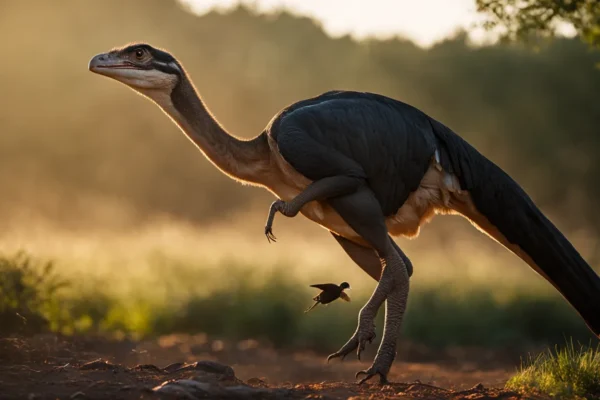Hummingbirds, those tiny, resplendent avian wonders, never fail to captivate with their dazzling plumage and spirited demeanor. In my backyard, these ephemeral guests grace us with their presence during the spring and summer, a spectacle that leaves me in awe. However, a curiosity lingers—where do these enchanting creatures go during other times of the year? Do they embark on migrations, or do they have unique ways of coping with changing seasons? Let’s delve into the intricacies of hummingbird migration and unveil the secrets behind their journeys.
Reasons Behind Migration
The Ruby-throated Hummingbird’s Long Journey
The Ruby-throated Hummingbird, a prevalent species in eastern North America, takes center stage as a long-distance migrant. Bid farewell in fall, it returns with the blossoms in April and May, marking the cyclical nature of its migratory pattern. Similar to other migratory birds like Baltimore Orioles and warblers, hummingbirds undertake these journeys out of necessity.
Weather and Food Scarcity
The driving forces behind hummingbird migration echo the challenges faced by many birds during winter. Freezing temperatures prove too harsh for hummingbirds, which lack the dense plumage and cold-adapted features found in some other species. With temperatures plummeting, these vibrant creatures seek warmer climates, avoiding the perils of winter.
The quest for sustenance also propels their migratory instincts. Winter brings a dearth of blooming flowers, a primary food source for hummingbirds. Faced with the absence of their preferred nectar-rich blooms, migration becomes imperative for their survival. While some may linger, relying on hummingbird feeders, the majority adhere to their migratory calling.
Image: Colder weather and lack of food play the biggest role when it comes to migrating.
Do All Hummingbirds Migrate?
The vast and diverse hummingbird family reveals a spectrum of migration behaviors. While many species that breed in Canada and the USA embark on migratory journeys, those dwelling in tropical regions adopt a different approach. In the Caribbean, Mexico, and Central and South America, the majority of the 300 hummingbird species choose not to migrate.
Tropical Abundance
The abundance of flowering plants and insects throughout the year in tropical regions eliminates the need for migration. These hummingbirds find sustenance year-round, sparing them from the challenges faced by their migratory counterparts. Although some tropical species may make localized seasonal movements in search of flowering plants, the core of their population remains rooted.
Image: Some hummingbirds living in warmer climates do not migrate.
Exceptions in North America
In North America, a few exceptions stand out. The Buff-bellied Hummingbird of the lower Rio Grande Valley in Texas, the Anna’s Hummingbird, and the Costa’s Hummingbird are among the non-migratory species. While these birds may undertake some migratory movements, their journeys are relatively short compared to their migratory counterparts.
As we navigate the diverse landscape of hummingbird migration, the tapestry of their behaviors unfolds. From long-distance journeys to year-round tropical residence, each species weaves its unique story within the broader narrative of avian migration. The captivating world of hummingbirds continues to inspire awe, inviting us to ap
As we continue to appreciate the intricacies of hummingbirds’ journeys across continents, the focus now shifts to the captivating destinations and exciting facts surrounding their migration.
Where Do Hummingbirds Migrate?
Hummingbirds exhibit a spectrum of migratory behaviors, covering short distances to awe-inspiring journeys spanning thousands of miles. The species breeding furthest north embark on the most extended migrations. Notable migratory hummingbirds include the Rufous Hummingbird, Calliope Hummingbird, and the Ruby-throated Hummingbird.
- Rufous Hummingbird and Calliope Hummingbird: These remarkable travelers migrate all the way to central and southern Mexico and then return north. The Rufous Hummingbird, in particular, journeys from southern Alaska to central Mexico, covering an impressive 4,000 miles.
- Ruby-throated Hummingbird: Flying to southern Mexico and extending even further, many Ruby-throated Hummingbirds spend winters in tropical dry forest habitats in Costa Rica, with some venturing into Panamanian gardens.
- Allen’s Hummingbirds: These birds migrate to central Mexico, while Black-chinned Hummingbirds travel between gardens in the western USA and tropical edge habitats in western Mexico.
- Broad-tailed Hummingbird: Departing the Rocky Mountains, this species winters in montane habitats in Mexico and Guatemala.
Exciting Facts About Hummingbirds And Migration
- Impressive Rufous Hummingbird Migration: Some Rufous Hummingbirds travel an astonishing 4,000 miles from southern Alaska to central Mexico, showcasing one of the most remarkable migrations among bird species.
- Ruby-throated Hummingbirds’ Gulf Crossing: Many Ruby-throated Hummingbirds embark on a remarkable 900-mile journey from the Yucatan Peninsula to Louisiana, crossing the deep waters of the Gulf of Mexico to reach their breeding grounds.
- Fueling Up for Flight: Before migration, hummingbirds diligently feed to build up fat reserves. This extra energy proves crucial for sustaining their long flights across vast distances.
- No Geese Hitchhiking: Contrary to past beliefs, hummingbirds do not hitchhike on the backs of geese during migration. Each hummingbird relies on its own wings and energy for this awe-inspiring annual journey.
- Solo Migration: Unlike some bird species that migrate in flocks, hummingbirds undertake migration individually. While several may be seen in the same area, they adhere to similar migration routes.
- Feeding and Migration: Maintaining feeders won’t deter Ruby-throated Hummingbirds from migrating. Migration timing is primarily based on daylight hours, and once it gets darker earlier, these tiny birds heed the call to depart.
- Consistent Migration Routes: Each hummingbird follows the same migration routes, returning to the same wintering grounds and breeding grounds year after year.
Frequently Asked Questions
Do hummingbirds stay around in the winter?
No, most hummingbirds do not stay around in the winter. However, some hummingbirds do stay for the winter in the western USA, southern Arizona, southern Texas, and along the Gulf Coast east to Florida.
Why do hummingbirds migrate in winter?
Hummingbirds migrate in winter to escape freezing temperatures and food scarcity. Their delicate bodies are ill-equipped for harsh winter conditions, and the absence of blooming flowers makes migration essential for survival.
As we delve deeper into the realms of hummingbird migration, these fascinating facts and insights unveil the remarkable resilience and precision woven into the fabric of their journeys. From epic migrations to individual tales of survival, each hummingbird contributes to the symphony of avian marvels that grace our world.








